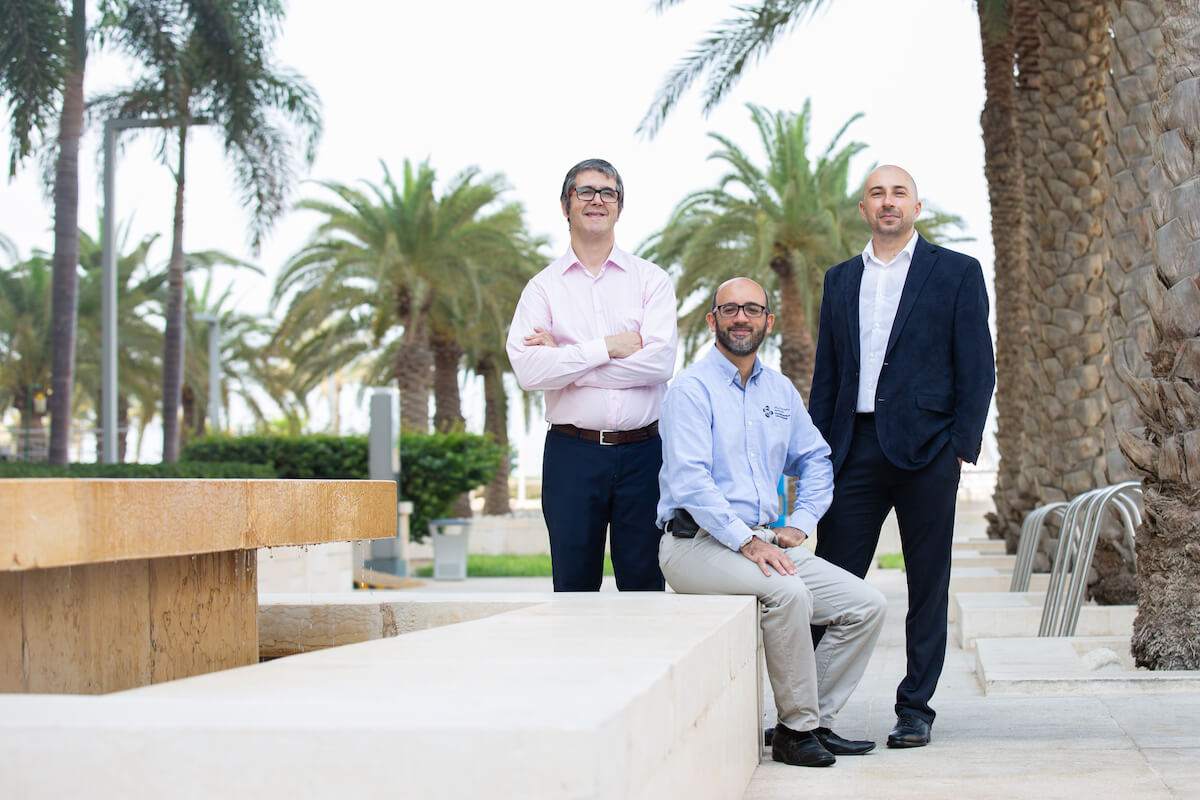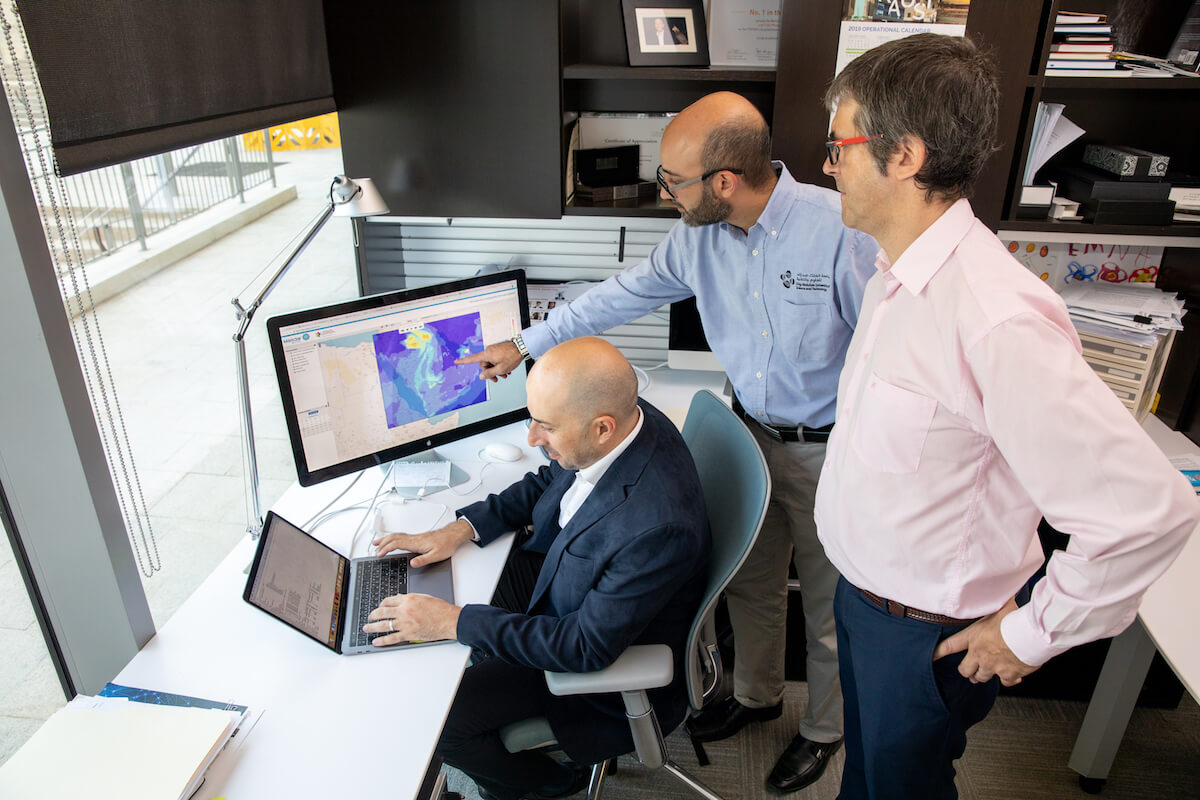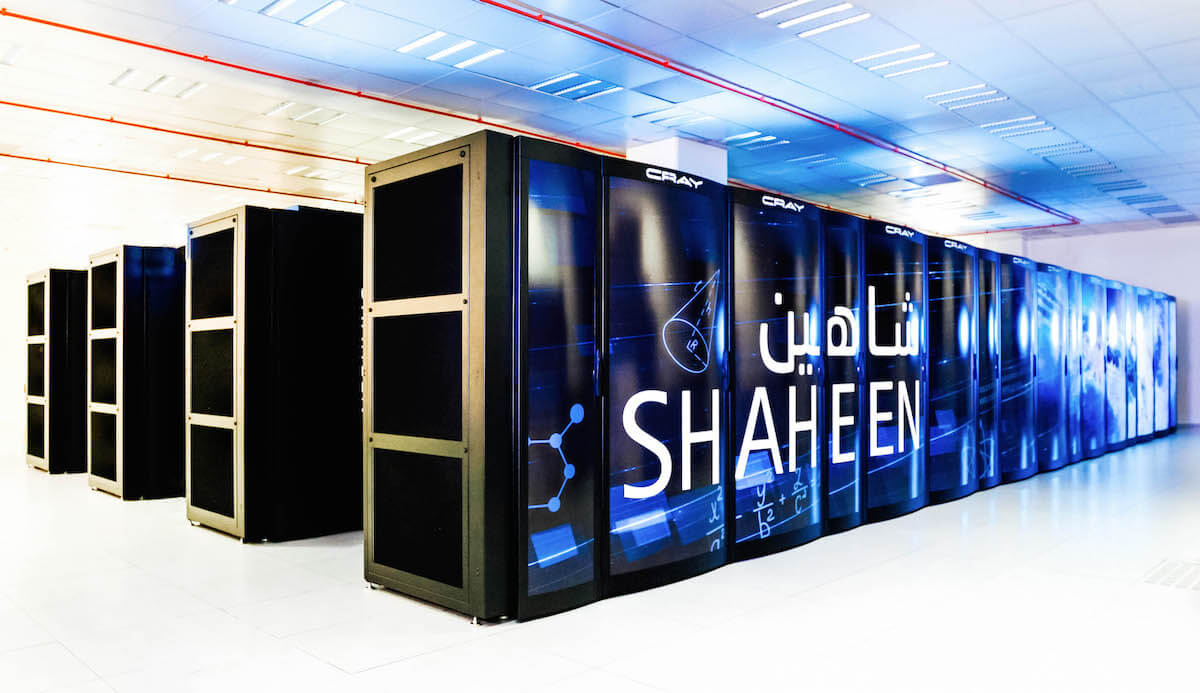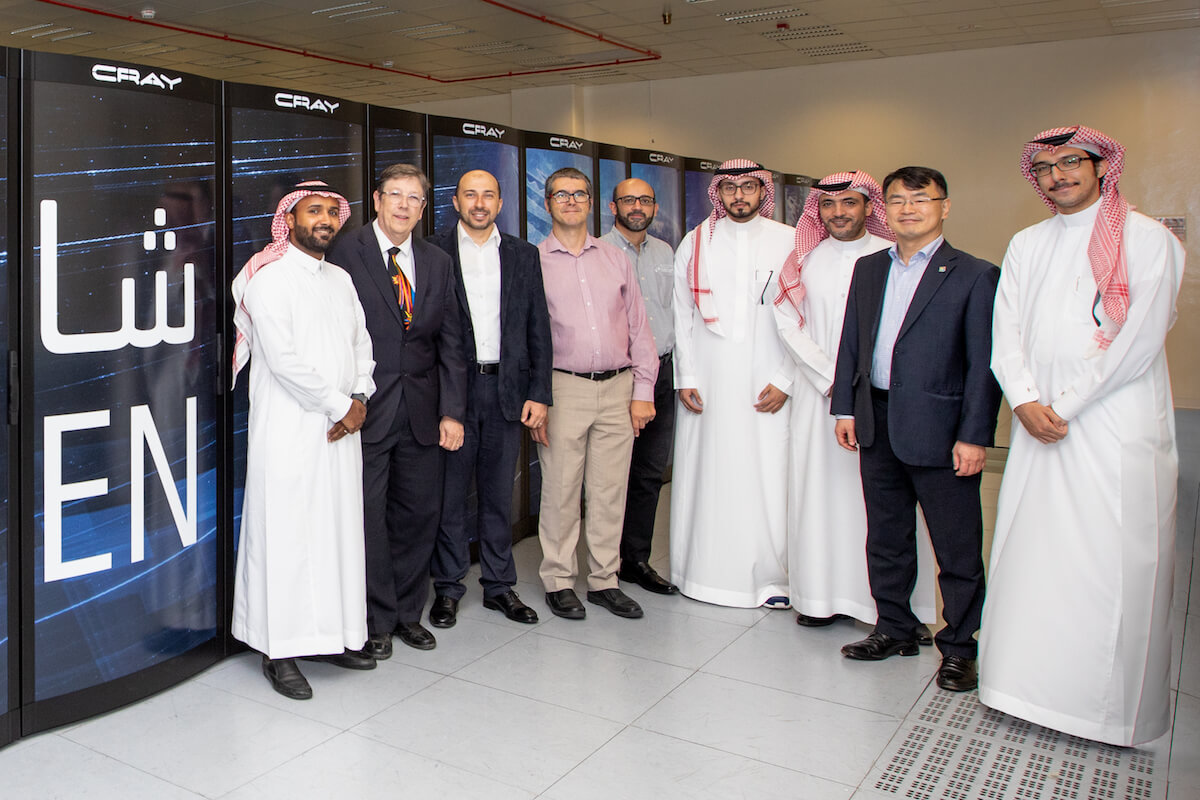Forecasting solar radiation in the Kingdom

The KAUST Supercomputing Core Lab's computational scientist team uses the University's supercomputer Shaheen II to forecast solar radiation in the Kingdom. Pictured from left to right: computational scientists Dr. Samuel Kortas, Dr. Bilel Hadri and Dr. Saber Feki. Photo by Khulud Muath.
By KAUST Core Labs
KAUST and King Abdullah City for Atomic and Renewable Energy (K.A.CARE) recently entered into an agreement that will combine the two institutions' advanced resources to carry out comprehensive studies on the Kingdom's solar irradiation and atmospheric weather conditions.
K.A.CARE has been taking part in the Renewable Resources Atlas Project under Saudi Arabia's National Renewable Energy Data Center, which provides assessments of renewable energy resources—such as solar and wind resources—in the Kingdom.
The project's observational stations will monitor both solar and wind data, with the objective of creating a readily accessible database for power project developers, researchers, government organizations, industry, academia and the general public. Simulation and modeling tools are also being added to the project to provide a more comprehensive picture of atmospheric weather.

KAUST computational scientists (from left to right) Dr. Saber Feki, Dr. Bilel Hadri and Dr. Samuel Kortas examine data related to solar radiation. Photo by Khulud Muath.
Such models not only produce massive datasets, but they are also required to do so at extreme speeds, and their production necessitates accessing KAUST's supercomputing resources.

The KAUST Supercomputing Core Lab operates Shaheen II, a 36-cabinet Cray XC supercomputer based on Intel Haswell processors with nearly 200,000 compute cores tightly interconnected with the Cray Aries high-speed interconnect. Shaheen II has supported 405 projects involving almost 900 users, including 100 projects from 13 in-Kingdom institutions across academia, industry and government sectors. File photo.

Dr. Bilel Hadri from KAUST's Supercomputing Core Lab explains the KAUST supercomputer Shaheen II's specifications and capabilities to collaborators from King Abdullah City for Atomic and Renewable Energy. Photo by Khulud Muath.
The agreement features one short-term and one long-term goal. The short-term goal focuses on simulating and archiving weather and atmospheric conditions from 2005 to 2018. The long-term goal is to provide daily forecasting of weather and atmospheric conditions (dust and air pollutants) over the Arabian Peninsula.

Staff from King Abdullah City for Atomic and Renewable Energy and the KAUST Supercomputing Core Lab staff are shown during a solar radiation forecast collaboration meeting in July 2019. Photo by Khulud Muath.

